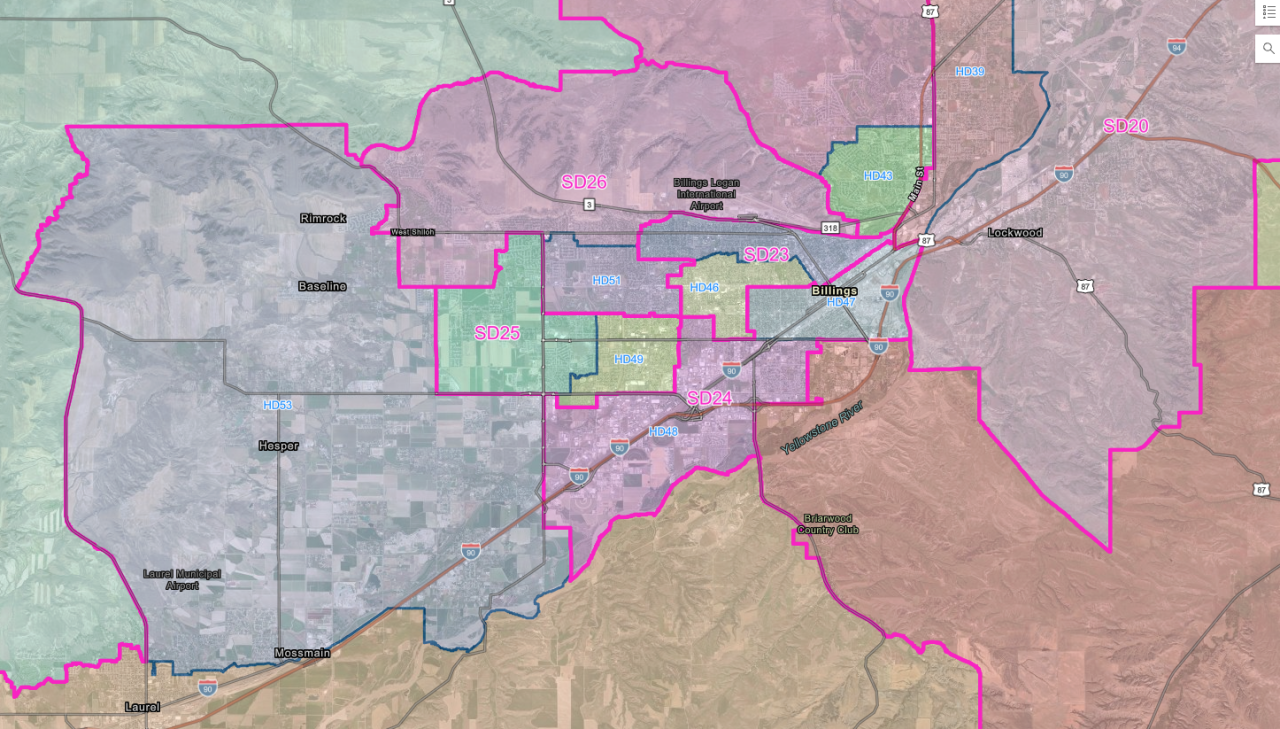YELLOWSTONE COUNTY — Yellowstone County may be a deciding factor in deciding control of the Montana Legislature.
Currently in the Legislature, the Republican Party holds a super majority, which means they cotnrol over two-thirds of 150 seats in the state House and Senate.
In advance of the 2025 Montana State Legislature session, both parties believe Democrats may kick some Republicans out of their seats after votes are tallied in the Nov. 5 election.

"I would say your county, Yellowstone County, is probably the most important county," said Don Kaltschmidt, the chairman of the Montana Republican Party.
Kaltschmidt said he believes Democrats could take some Republican legislative seats in Yellowstone County. If the Republican party loses its one-seat super majority, it would mean the GOP would no longer have a large enough majority to override vetoes from the governor.
"We're still going to have our majority more than likely. We may have less majority... so we'll be able to get our agenda done," Kaltschmidt said.

The reason this election is so hot is due to new redistricting lines. An independent commission, the Montana Districting and Apportionment Commission, redraws state lines every 10 years based on the U.S. Census.
In Montana, there are currently 34 Republican senators and 68 Republican representatives in the state legislature, or 68% Republican. There are 48 Democrats. However, with new state lines, these numbers are expected to change.
In Yellowstone County, Republicans control 14 House seats and six Senate seats, while Democrats hold two seats in each chamber. House members are elected every two years, while members of the Senate have four-year terms.

"We've suffered through their gerrymandering. But, I think it's ridiculous, because no matter which way the maps were drawn up, it was going to be a long, hard-fought battle for Democrats to pick up any seats," said Becky Riedl, the chair of the Yellowstone County Democratic Central Committee.

Gerrymandering refers to the practice that parties draw lines of legislative districts to benefit their own members. In this scenario, the Republican Party believes the new lines allow more Democrats to win races. The committee that draws the lines is nonpartisan, but. However, the chairman on the committee, selected by Republican Gov. Greg Gianforte, is a Democrat, according to Kaltschmidt.
Gerrymandering can be used as a tool to group different neighborhoods, meaning rural Republican voters in Yellowstone County could be grouped with urban Democrats from Billings. In that case, Kaltschmidt said those rural voters could be disenfranchised because their numbers are smaller than the larger urban area.
"Gerrymandering and disenfranchising those conservative voters that have been in a district, and now they'll end up in a Legislature that doesn't meet their needs," he said.
According to Riedl, Yellowstone County is extremely important in this upcoming election not only because it's the largest in the state, but also because it's one of the most diverse, including high Indigenous populations, rural farmers and city Democrats.
"We don't think it's fair to the people of Montana who happen to be overwhelmingly Republican. But, the point is we're talking about rural and urban," said Kaltschmidt.
With Republicans see misrepresentation in these new lines, they can be a win for Democrats, who need to gain two seats to end the super majority.
"I don't see us having a big landslide. But I do see us picking up a seat or two, and we worked very strategically hard this year," said Riedl.
Next week, Montana voters will decide if that strategy worked.





